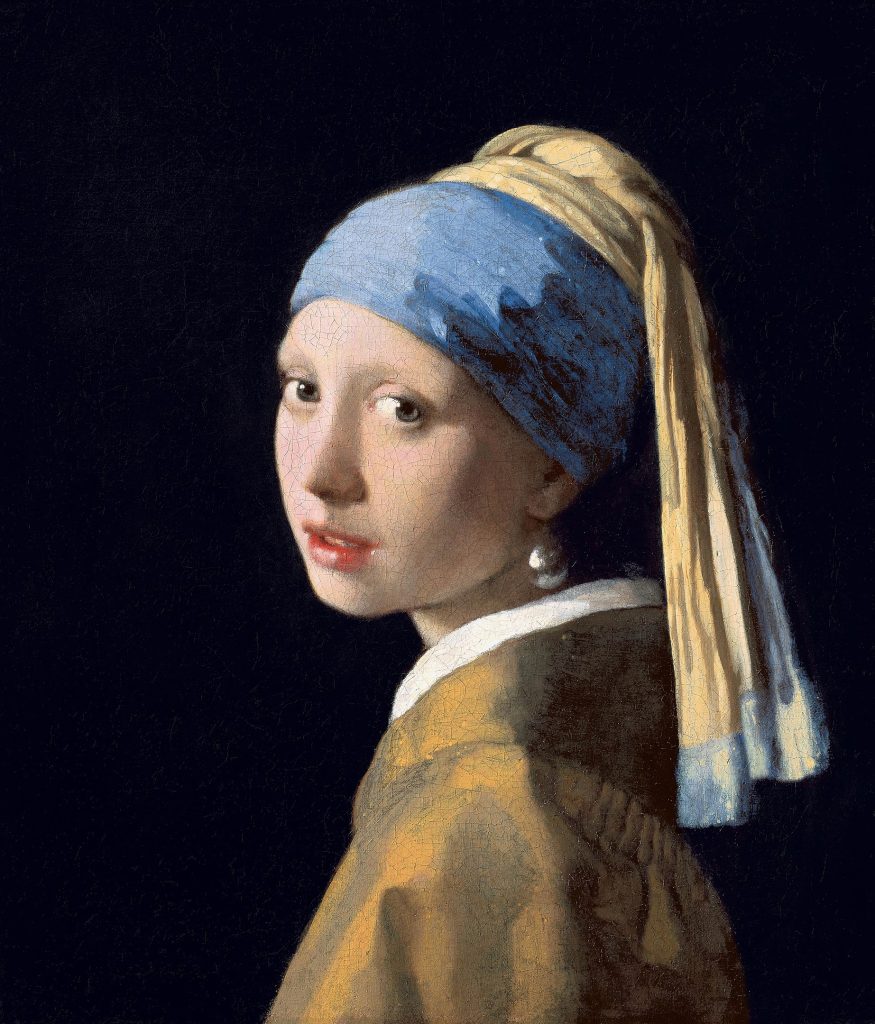Vermeer: The “Dutch Golden Age” Master Who Painted Poetry with Light – Why His 35 Paintings Speak Louder Than a Thousand Words
In the pantheon of oil painting greats, Johannes Vermeer stands apart – not for prolificacy, but for precision. While Renaissance masters like Rembrandt left behind hundreds of works, Vermeer’s entire known oeuvre numbers just 35 paintings. Yet this small collection has resonated through centuries, earning him a place among history’s most revered oil painters. What makes these few canvases so powerful? The answer lies in how he turned light into language and ordinary moments into timeless poetry.
The Alchemy of Light: How Vermeer Painted Emotion
Vermeer’s true genius lies in his revolutionary understanding of light – not as a tool to illuminate subjects, but as a storyteller in itself. In “Girl with a Pearl Earring” (c. 1665), the soft glow catching the 少女’s cheek and the luminescent pearl isn’t mere technique; it’s a whisper of intimacy, making the viewer feel they’ve stumbled upon a private moment. Similarly, “The Milkmaid” (c. 1657-1658) uses streaming window light to transform a simple kitchen scene into a study of quiet dignity – the beam highlighting dust motes, the curve of the earthenware jug, and the maid’s focused gaze as she pours milk.

This wasn’t accidental. Vermeer likely used a camera obscura (an early optical device) to study how light behaves in real spaces – how it softens edges, creates subtle gradients, and gives objects a three-dimensional warmth. He translated these observations into oil painting techniques that feel almost photographic, yet infinitely more emotional. His layers of translucent glazes, particularly his signature use of costly ultramarine blue and lead white, created depth that makes light move across the canvas, as if the sun itself is shifting in the sky.
Finding Divinity in the Everyday
While his contemporaries painted grand historical scenes or dramatic religious narratives, Vermeer turned his eye to the mundane: a woman reading a letter, a maid pouring milk, a girl tuning a lute. These genre paintings of 17th-century Dutch domestic life might seem unremarkable at first glance, but Vermeer elevated them into universal meditations on human experience.
In “Woman Reading a Letter” (c. 1663), the subject’s downturned eyes and the half-opened window behind her tell a story without words – longing, connection, the quiet thrill of correspondence. “The Music Lesson” (c. 1662-1665) captures a fleeting interaction between teacher and student, the light falling on their hands as they touch the keyboard, suggesting harmony both musical and human. These scenes aren’t just snapshots of Dutch life; they’re reflections of what it means to be alive – to work, to love, to pause and contemplate.
Why 35 Paintings Are Enough
Vermeer’s limited output wasn’t a flaw – it was his strength. Each painting bears the mark of meticulous care; some scholars believe he spent months on a single canvas, perfecting every brushstroke. He didn’t paint to satisfy patrons or chase fame; he painted to explore the beauty of what others overlooked.
This focus on quality over quantity is why his work endures. In an age of endless digital images, Vermeer reminds us that true art isn’t about volume – it’s about seeing deeply. His 35 paintings teach us to notice the light through a window, the weight of a letter in someone’s hand, the poetry in a moment that might otherwise pass unnoticed.
For oil painters today, Vermeer’s legacy is clear: mastery lies not in how much you create, but in how authentically you capture the world as it feels. Whether you’re painting a grand landscape or a simple still life, channeling a bit of Vermeer’s reverence for light and life can turn any canvas into something extraordinary.
In the end, Vermeer’s 35 paintings speak louder than a thousand words because they don’t just show us the world – they make us feel it. And in that feeling, we find the timeless power of great oil painting.